© ROOT-NATION.com - Use of content is permitted with a backlink.
Against the backdrop of growing tensions in the world, military research and development are becoming increasingly relevant. They showcase the innovations, curiosity, and determination of the world’s top engineers and scientists. Let’s take a brief overview of military technologies that are currently being developed in companies and laboratories around the world.
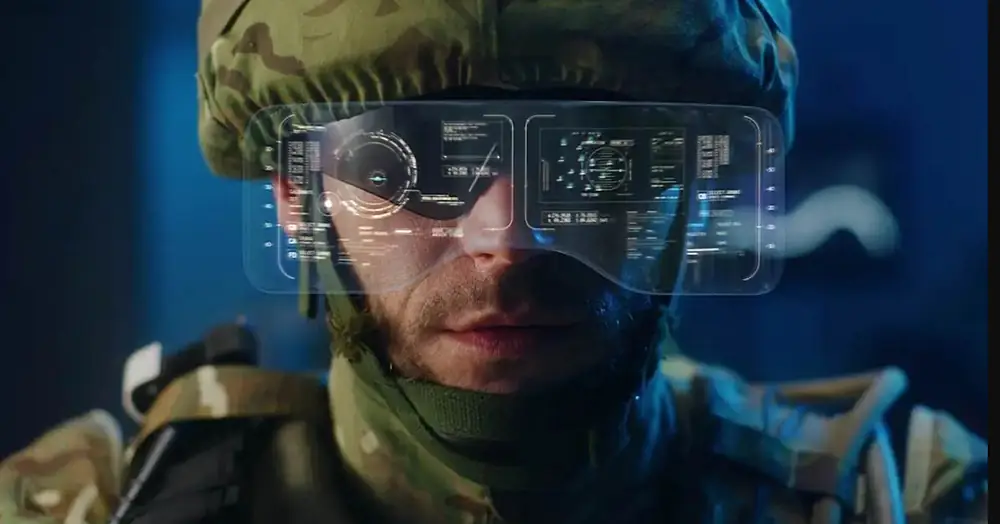
Today, instead of conventional warfare, hybrid approaches are increasingly used, which also include cyber warfare and other directions. New trends in military technology are changing the battlefield in four aspects – communication, lethality, autonomy, and resilience. Carefully observing Russia’s war against Ukraine and the escalation of tensions in other parts of the world, the military is increasingly focusing on technological solutions that could potentially give other countries an advantage in conflict.
Read also:Top 10 Most Important Known Military Satellites
Artificial intelligence and autonomous weapons
Experts predict that artificial intelligence will become a decisive factor in the development of unmanned platforms. Next-generation drones will fly autonomously, without the intervention of end users, but users can take over or intercept control if necessary. Drones will fly in any weather conditions and track enemy activity, sending reconnaissance data and video materials to end users. Operators will be able to track and identify personnel through facial recognition and determine whether they are friendly or hostile. Facial recognition will increase the ability to track specific combatants and allow soldiers to directly engage targets with fire. This technology will also help reduce collateral damage and prevent the loss of civilian lives, which could previously be perceived as hostile. The presence of lasers will also enhance the capabilities of next-generation drones.
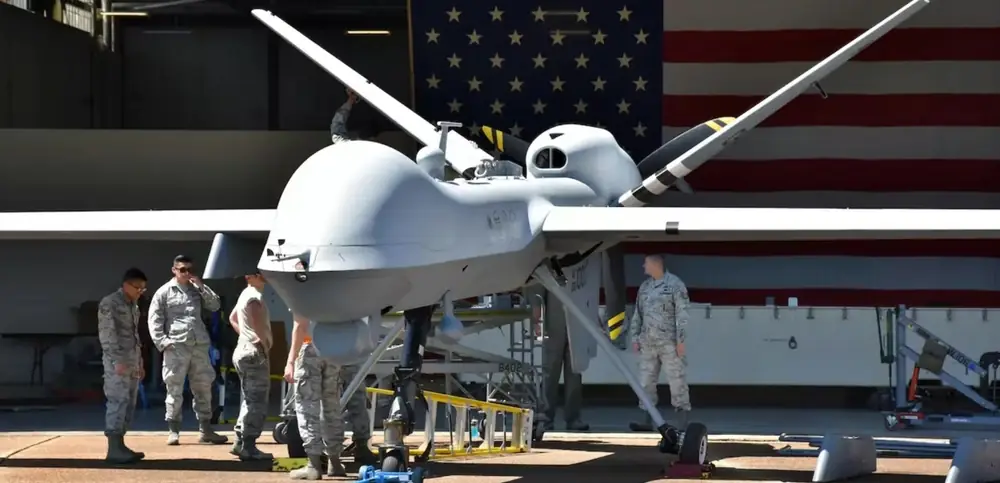
Laser technologies provide drones with a new level of lethality, similar to missiles like the Hellfire. Future drones will use penetrating laser energy to destroy vehicles, aircraft, and other weapon systems. Laser energy creates a powerful thermal footprint and can rapidly burn through targets. Lasers will be cost-effective and deliver a significant blow to the enemy, disabling and preventing their advancement during operations.

Autonomous drones equipped with laser-focused energy will be able to adapt to any situation, provide observation, and be crucial on the battlefields. Drone teams will work together and provide reconnaissance data, allowing commanders to make important decisions on the battlefield. Small drones will move in groups, transmitting data from the battlefield and receiving information from each other. Artificial intelligence instills fear and uncertainty in enemies and can also provide the operational potential needed to succeed in any situation.
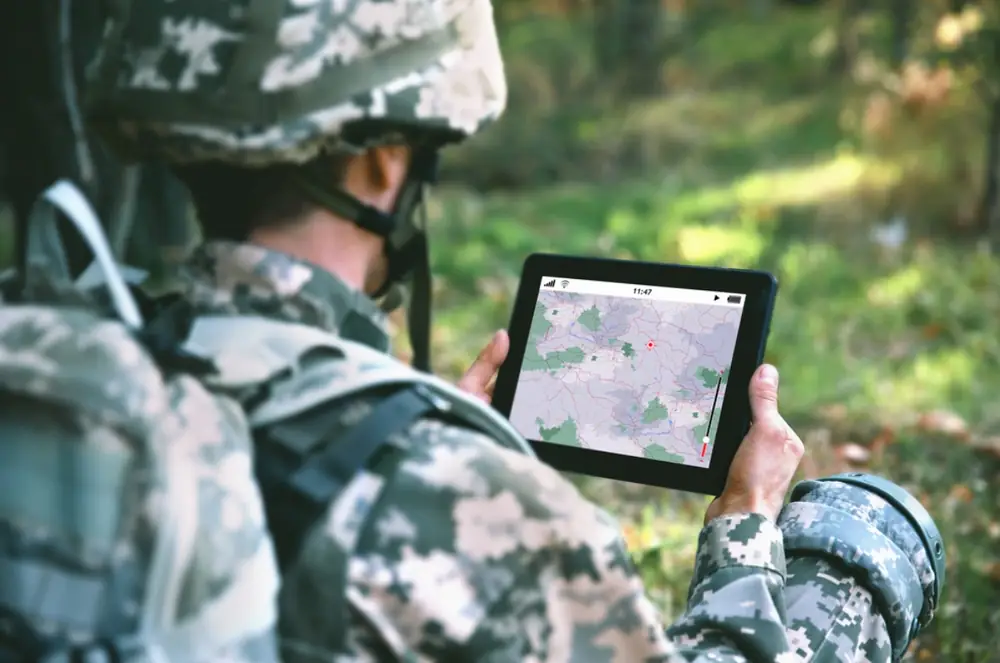
For example, the Israeli startup Axon Vision is developing an artificial intelligence-based decision-making system. The startup’s product, edge360, uses computer vision to provide ground vehicles with complete and automated situational awareness. With an intuitive user interface and configured alert mechanisms, it detects, classifies, and evaluates threat locations in real-time. The startup’s solution enables tactical teams to navigate threats and obstacles on the battlefield.
The American startup Rebellion is developing artificial intelligence products tailored to specific defense and security tasks. The startup utilizes machine learning and data systems to mitigate threats and ensure mission success. Its software products, offered as a subscription service, are used to achieve comprehensive situational awareness, perform autonomous missions, and enhance cyber readiness. User-centric software is built on an open architecture and is therefore compatible with existing hardware and software systems.
Read also: 10 Mistakes That Simplify the Work of Hackers
Cyber warfare
Cyber infrastructure is crucial for maintaining security systems. By 2040, cyber specialists will become the most sought-after profession in the armed forces due to the increasing threat of cyber warfare worldwide. According to User magazine, all information is currently digitized and available electronically. Defense against cyber warfare can be psychologically complex. According to Silva magazine, a computer virus spread worldwide in 2010, ultimately disabling a secret Iranian nuclear weapons facility. Symantec Corporation analyzed the virus data but could not determine which country developed it.

The development of next-generation cyber warfare capabilities will be cost-effective and have long-term consequences, allowing countries to disable entire energy systems. The complexity and skills required to perform these critical tasks will shape future battles. Cyber warfare is evolving, and creating a platform to exploit the weaknesses of the enemy will significantly disrupt their communications and critical infrastructure. Cyber capabilities can disable satellites, destroy enemy infrastructure, equipment, and technologies.
For instance, the French startup HarfangLab is implementing cybersecurity solutions for critical infrastructure objects in the interests of national defense. The startup’s technology is built on highly complex programming, ensuring both high-speed computations and enhanced security. The EDR software helps in monitoring, automatically detecting, investigating, and neutralizing cyber threats. Designed to be open, the software structure allows for easy integration with existing cybersecurity solutions in any organization.

In turn, the American startup Cyber Forza offers a unified cybersecurity platform. The startup’s product functions both as a defender and an interceptor. While the former combats external threats, the latter is aimed at internal threats. The platform also provides AI-based Distributed Denial of Service (DDoS) protection. Additionally, it offers real-time monitoring, protection against phishing scams, as well as defense against ransomware and malware attacks.
Read also: What Passenger Airplanes of the Future Will Look Like
Information warfare
Disinformation and overloading critical infrastructure systems will enable countries to deliver decisive blows to their adversaries. Overloading enemy networks and disrupting their communications helps shape narratives and spread effective disinformation among the enemy population. Experienced computer hackers, known as “crackers,” can hack into or overload military computers and networks, or spread computer viruses. Jammers can also block radio and television broadcasts, as the past fifteen years serve as some evidence of impending developments, we will continue to witness a gradual, evolutionary escalation of information warfare.
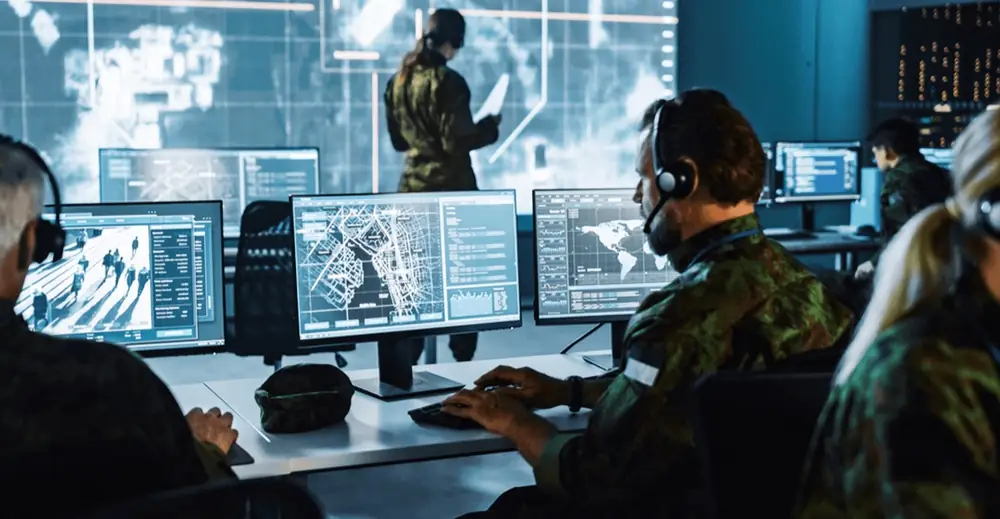
The relevance of our state’s security lies precisely in this informational sphere, as evidenced by the adoption by the Verkhovna Rada of Ukraine of the Law of Ukraine “On the Basics of National Security of Ukraine” (Official Bulletin of Ukraine, 2003, No. 39, Article 351). The impact on the functioning of information systems with the aim of disabling them, spreading information within them to influence decision-making processes that serve the interests of those preparing such information, and so on, is commonly defined as information-psychological warfare. Information is the key to success on the battlefields, and next-generation weapons are tools for achieving success on the battlefield.

There’s also IPSO (Information-Psychological Operation) – one of the main tools of modern military and political struggle. The main goal of IPSO is to influence the psychological state and mood of society or a specific group of people, as well as to change the perception of a particular situation or events. This may include spreading disinformation, propaganda, exaggerating or downplaying certain facts, cyberattacks, sabotage in the rear, and other methods of influence. Currently, Russia is using IPSO to create an image of Ukraine as an unstable and incompetent country, spreading misinformation about events, distorting facts, and creating conditions for changing public opinion both in Ukraine and abroad.
Read also:All about the Rosalind Franklin rover, part of the ExoMars program
Hypersonic technologies
Imagine rockets or something that flies faster than the speed of sound; that’s almost unimaginable speed. By 2040, hypersonic weapons will be equipped with nuclear warheads, flying at speeds that exceed the speed of sound by 20 times. Such speeds will provide surprise to enemies. If its reliability is proven, this hypersonic weaponry will help deter threats from any country. Development has already begun. Hypersonic weapons will be configured in three variants: guided ballistic missiles, hypersonic cruise missiles, and boost-glide missiles. This will enable the deployment of conventional or nuclear weapons anywhere in the world within minutes.
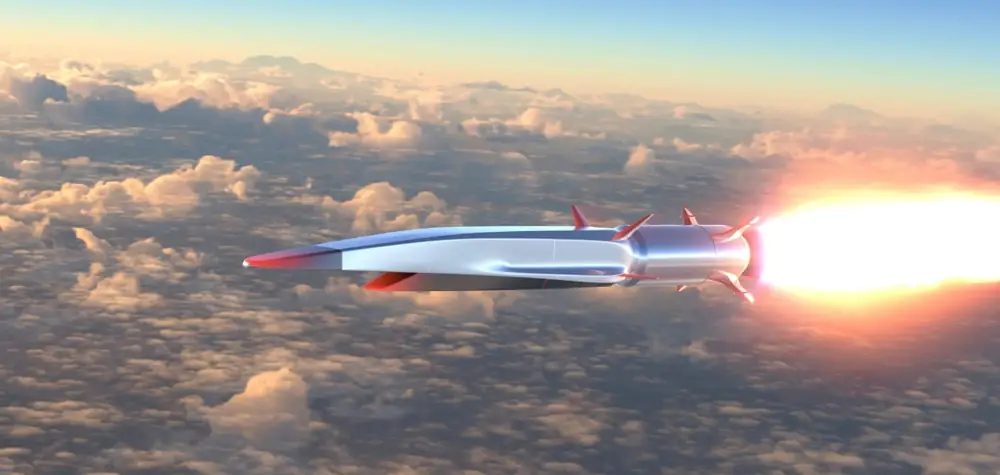
Next-generation hypersonic aircraft will be able to use conventional ammunition, but their speed and capabilities will allow them to fly unnoticed. Depending on the design, some aircraft will be able to deploy satellites into space. Hypersonic engines will generate greater thrust and allow aircraft to travel where traditional aircraft cannot reach. However, military weapon systems must go through important stages of development, testing, training, and deployment to be available on modern battlefields.

For example, the American startup Hermeus is building aircraft that will fly at Mach 5. The Quarterhouse hypersonic jet is being developed for travel at speeds exceeding 5000 km/h. It will use its own engine with a turbine-based combined cycle (TBCC) and will have both military and commercial applications. The technology will be capable of performing reconnaissance, surveillance, and reconnaissance missions for the Air Force.
Another American startup, Epirus, is developing directed energy weapon systems. It utilizes solid-state, software-defined high-power microwave technologies to provide counter-electronic effects for various use cases. Thanks to its open architecture, the product integrates with existing ground, maritime, and aerial systems for multi-layered protection against autonomous threats. Lightweight capsules enable the destruction of critical electronic components, disabling drones.
Read also: 6 Intercontinental Ballistic Missiles (ICBMs) That Could End the World
Robotics
It’s well known that being a soldier is a dangerous job, but some tasks soldiers have to perform are more hazardous than others. For example, walking through minefields, deactivating unexploded bombs, or clearing enemy buildings are among the most dangerous tasks a person can perform in the line of duty. What if we could send robots into the zone of armed conflict instead of people? Then, if something goes wrong, we would only lose the money spent on creating robotics, not people. And we can always build more robots.
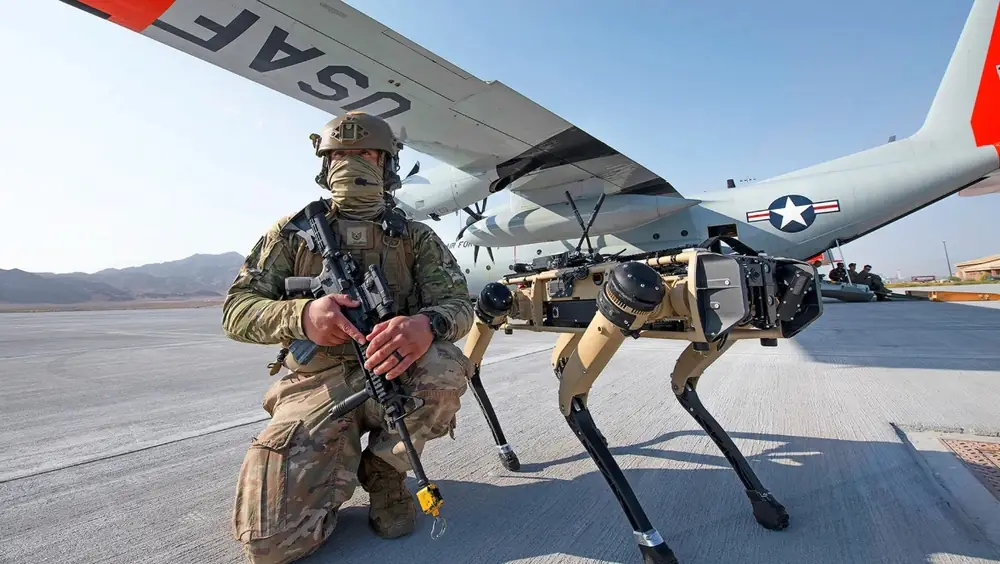
For example, the US military has been developing robotic systems for various tasks for many years, and some of them have even been deployed on the front lines in Iraq. Ghost Robotics, a manufacturer of robot dogs, showcased an armed version of an autonomous robot at the 2021 annual Association of the United States Army conference. This new robotic technology opens up numerous possibilities but also raises concerns. The battle for armed autonomous robots is just beginning to gain momentum.
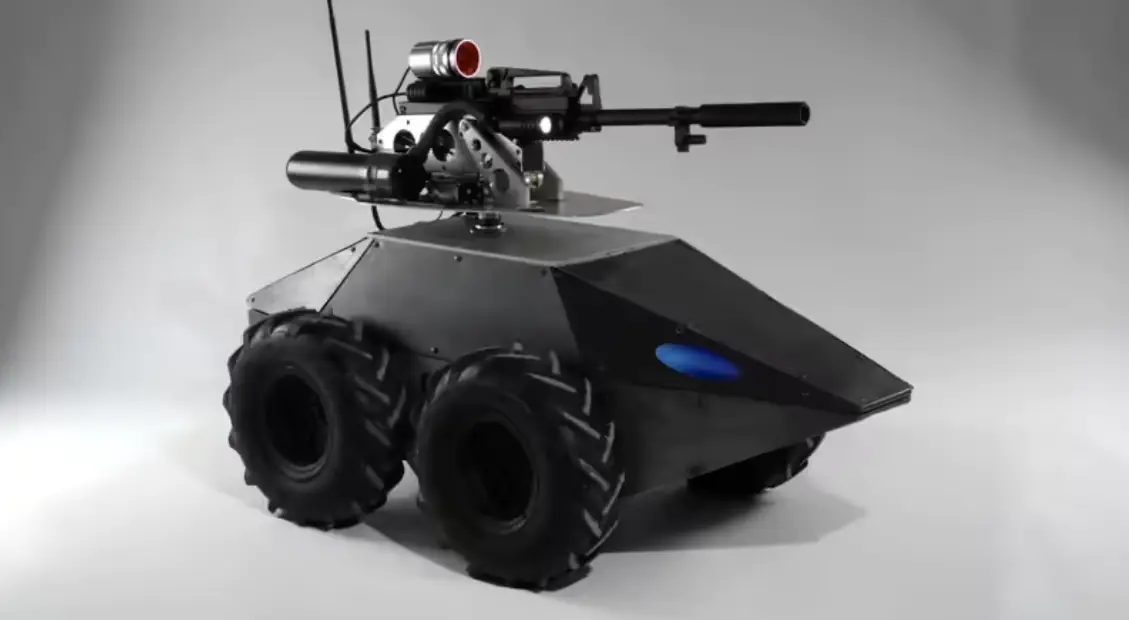
Many people around the world are opposed to autonomous weapon systems, including the governments of New Zealand and Austria. Many countries already utilize “man-in-the-loop” systems, meaning robotic weapon systems controlled by a human operator via remote control.
Read also: 5th and 6th Generation Fighters: What’s the Difference and Where’s the Limit?
Immersive technologies
With immersive technologies, it is becoming easier to create replicable and flexible experiences, especially for flight or combat training. Startups are using virtual reality (VR) to create synthetic training environments (STE). These environments augment traditional training and mission practice, thereby enhancing the readiness of soldiers and units.
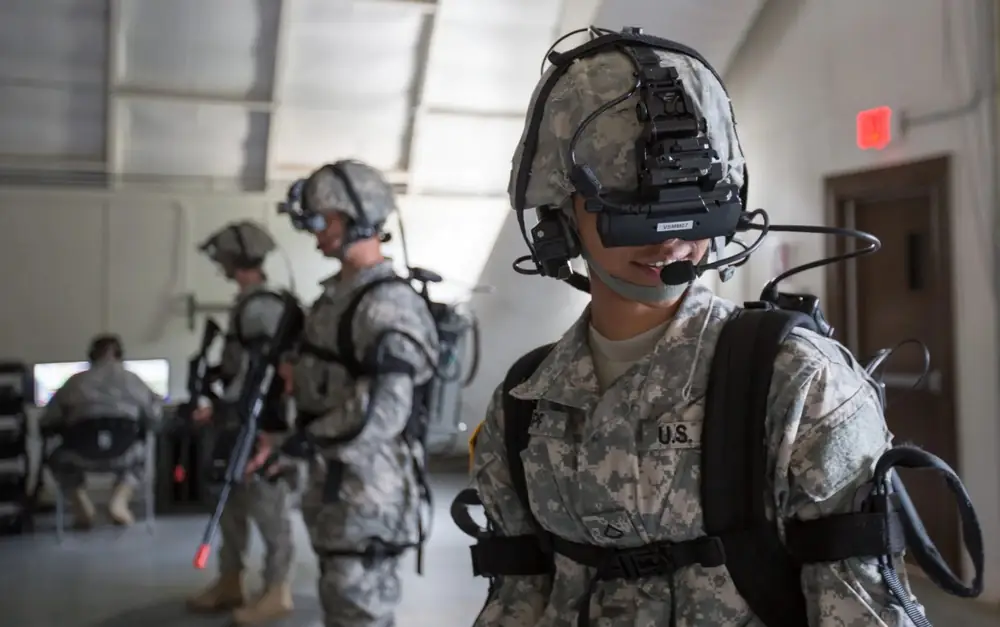
Augmented reality goes beyond virtual reality in military training capabilities. It equips soldiers on the battlefield with augmented reality glasses or headsets that provide mapping information, movement markers, and other data. This technology enhances real-time decision-making for ground troops. Additionally, immersive technologies aid in mission planning. They provide three-dimensional terrain maps and simulate the surrounding environment, facilitating a comprehensive understanding of the mission area.
For instance, the American startup GOVRED is developing virtual reality-based training solutions for the military. The startup utilizes HTC Vive headsets and proprietary code to create scenarios at a frame rate of 90 frames per second. This allows users to navigate an area of 25 square kilometers, interacting with multiple scenarios. The startup’s proprietary training technology provides military personnel with a full range of training and combat simulators for firearms shooting.

Another American startup, Red 6, is developing the Airborne Tactical Augmented Reality System (ATARS) – a solution for combat training based on augmented reality. The system combines augmented reality and artificial intelligence for aerial combat training. It overlays virtual and constructive objects into the real world, allowing pilots and ground operators to see synthetic threats in real-time, outdoors, and in high-speed environments. This technology can be scaled for conducting multi-domain operations and helps squadrons enhance readiness and lethality.
Read also: Top 5 Most Modern Nuclear Submarines
5G communication
In military operations, the timeliness and accuracy of information are of paramount importance. Accelerating real-time decision support, 5G offers hyper-converged communication and secure data transmission networks. This technology paves the way for new management and control programs and optimizes logistics.
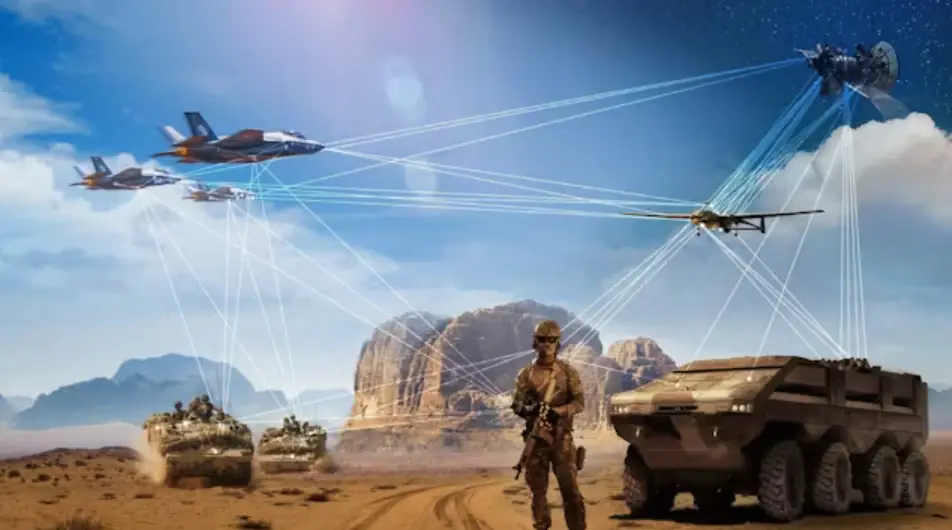
Furthermore, 5G networks enable the transmission of vast amounts of data to remote sensors and weapons, creating dense, resilient networks on the battlefield. This progress provides instant situational awareness and enhances training and combat capabilities. Importantly, 5G also facilitates efficient remote management, offering seamless communication for unmanned systems, including drones and autonomous vehicles.
For instance, the Indian startup Niral Networks is creating a private 5G infrastructure for “last-mile” connectivity. Its open and disaggregated network operating system, NiralOS, facilitates working with 5G products and edge computing. NiralOS integrates with any off-the-shelf “white-box” hardware. For defense organizations, the 5G infrastructure enables fast and cost-effective digital transformation on all fronts.
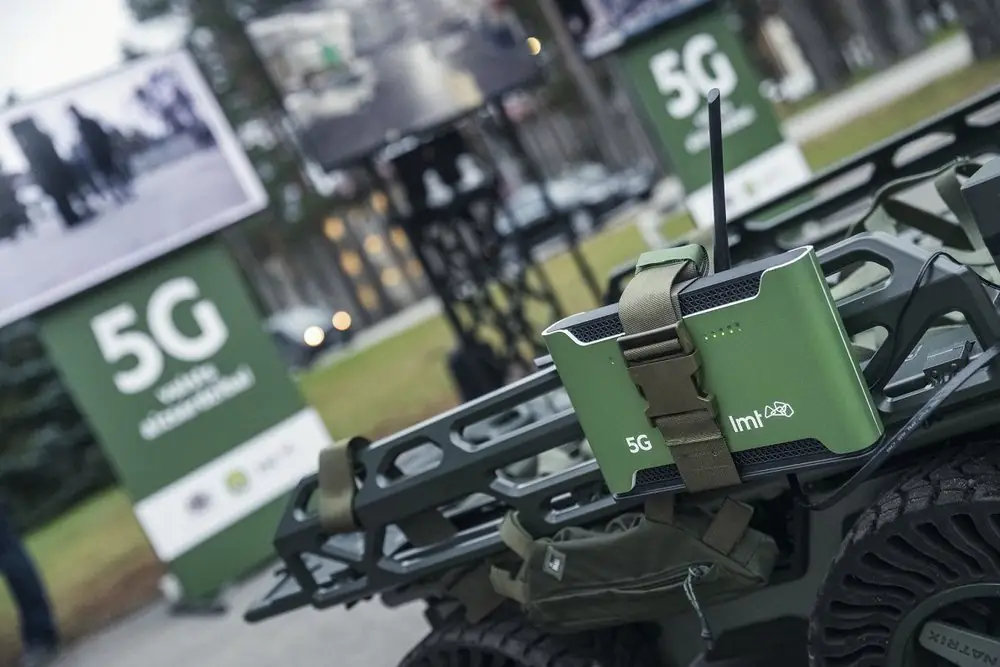
In turn, WiGL, an American startup offering wireless electricity charging through targeted energy via the air, utilizes a mesh network of wireless transmitters. It transforms any power outlet, car charger, or power source into a smart electricity router. Communication occurs device-to-device using 5G or Wi-Fi. Thanks to wireless charging, IoMT devices are no longer dependent on battery availability.
Read also: Transistors of the Future: New Era of Chips Awaits Us
Exoskeletons
You might be surprised to learn that soon a slightly less incredible version of the Iron Man suit could allow soldiers to run faster, carry heavier weapons, and leap over obstacles on the battlefield. At the same time, it will protect them from bullets and bombs. Military researchers have been working on the concept of powered exoskeletons – technology designed to enhance the human body and expand its capabilities – since the 1960s. But recent advancements in electronics and materials science are finally making this idea realistic.

Modern exoskeletons are designed to lift heavy objects, with the ability to transfer the weight of heavy loads to the ground using robotic legs of the exoskeleton at the lower part of the body, and they can also perform deep squats, crawling, and lifting the upper body with minimal effort from the user. They are equipped with sensors and GPS receivers. DARPA is also developing computerized fabrics that can be used together with exoskeletons to monitor heart rate and breathing frequency.
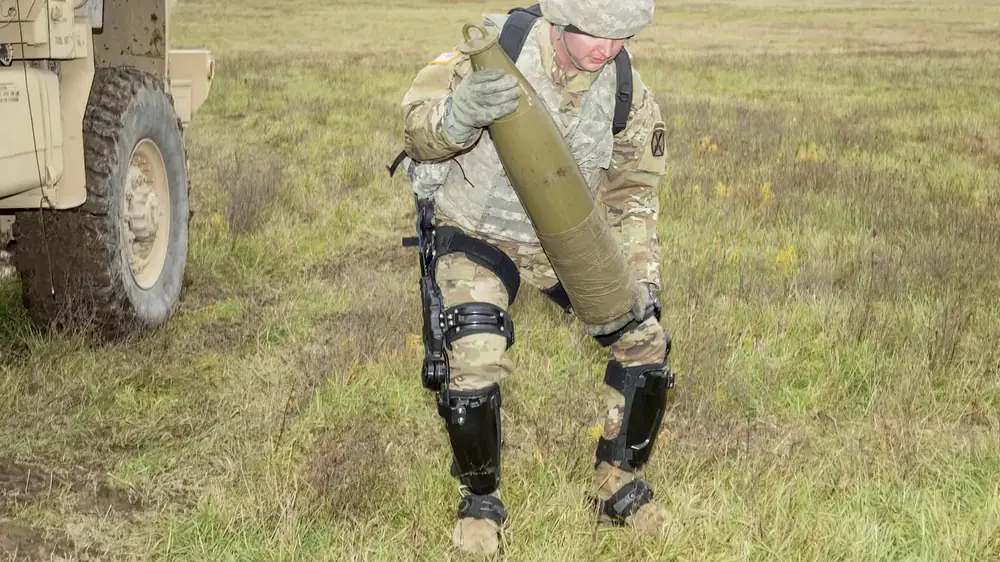
For example, Berkeley Bionics is testing eLegs – an exoskeleton powered by a battery, designed to allow disabled individuals to walk, stand up from a seated position without assistance, and stand for extended periods of time. Meanwhile, the German company Mehler Protection and Canadian engineers from Mawashi Science & Technology have developed an advanced bulletproof tactical exoskeleton for the French Gendarmerie. While civilian exoskeletons assist in lifting weights and reducing fatigue, this military-grade exoskeleton, called ExoM, sets a new standard for protective gear.
Read also: Neuralink Telepathy chip: what it is and how it works
Conclusions
Despite many details being classified, it is evident that many countries are striving to develop, test, and implement technological innovations as quickly as possible. Technological solutions that enable both offensive and defensive capabilities will be critically important in the coming years and in the almost inevitable new world war. In the future, we can expect the military sector to adopt technological trends from the business sector, such as artificial intelligence, robotics, and cybersecurity, aiming to rapidly develop new solutions.
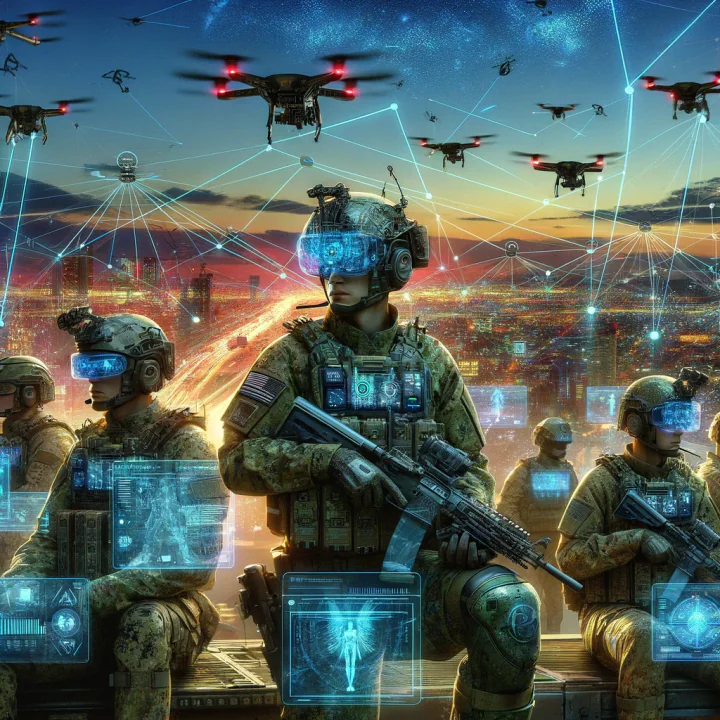
In the future, I believe these trends will have the greatest impact on the defense sector. There are other trends, such as quantum computing, which I did not include because I believe they are still maturing, or others like enhanced HMI (VR, AR, MR), which, in my opinion, are already consolidated. Investments aimed at the rapid development and implementation of these technologies will be vital for innovation in national security. Outdated defense systems must undergo modernization to leverage the operational advantages offered by new technologies. Additionally, policies for ethical and responsible use of innovative technologies should evolve in parallel with the development of the technologies themselves.
What do you think about this?
Read also:

